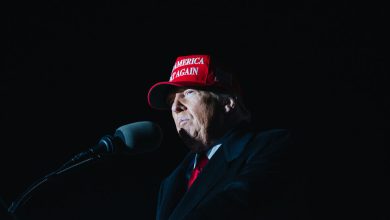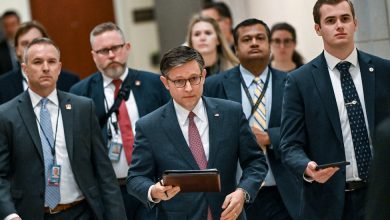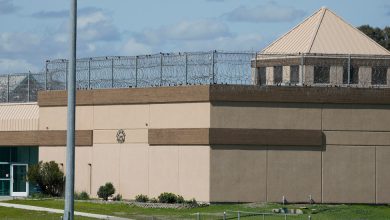Our Racial Reckoning Could Have Come Sooner. What Made 2020 Different?

Why was there an all-encompassing racial reckoning in this country starting in the spring of 2020? And why then? Examining that question reminds us that history is driven — by general trends classifiable as progress or decline — but also just happens. Specifically, chance factors, what historians sometimes call “contingency,” have greater effects than we are always inclined to notice.
As the physicist Cameron Gibelyou and the historian Douglas Northrop note in their useful “Big Ideas: A Guide to the History of Everything,” “To state that an event was contingent in general, without further qualification, means that the event would not have been possible without a certain sequence of previous events or actions being taken by particular actors, that it did not have to happen the way it did.”
Ancient examples include the Ming dynasty’s decision not to pursue imperial goals across the sea after 1433. Otherwise, China might have established worldwide colonies in advance of Europeans, and the trajectory of world history would be quite different. The Battle of Salamis in 480 B.C.E. held the Persians off from Greece, after which Greek culture flowered in ways that helped forge the intellectual and artistic culture of Europe. It is interesting to imagine the different cultural developments that might have ensued if Persia had conquered and maintained dominion over Greece and then beyond.
Contingency matters in our times as well. We might propose, for example, that the murder of George Floyd set off a reckoning on race in America. However, that is more a description than an explanation.
There have been other relatively recent cases of gruesome and unjustifiable killings of Black people by the police that have become national touchstones and yet did not result in racial reckonings of the kind we’ve seen since 2020: When, in 1999, the police gunned down Amadou Diallo in the vestibule of a New York City apartment building as he was reaching for his wallet, the media coverage was intense and sustained. The Rev. Al Sharpton, in a role now quite familiar, served as a kind of spokesman for Diallo’s family.
Yet there was nothing we would describe as a racial reckoning in the wake of Diallo’s death, nor did the initiative on race that President Bill Clinton started in 1997 result in anything like the intensity of discussion, or changes in language and norms, that our current reckoning has.
We might suppose that social media needed to emerge before such a thing could happen. But then social media was largely the reason the shooting deaths of Trayvon Martin (though not by a police officer) and Michael Brown became national causes célèbres in 2012 and 2014. Yet while these cases did intensify national awareness of the generally uneasy and often perilous relationship between Black people and law enforcement in this country, they didn’t occasion a comprehensive reassessment of racism, its nature and its role in creating today’s inequalities in the way Floyd’s murder did.
One might propose that what happened in 2020 happened because Black America was by then especially fed up — weary and disgusted with the nation’s refusal to more seriously address police violence. I imagine that analysis when I recall historian and former assistant attorney general Roger Wilkins in 2005 describing some Watts rioters of 1965 as “fed up” with the bleak circumstances of many citizens in Watts and South Central Los Angeles at the time. He was responding to my query about why it was in the late 1960s — after passage of the Civil Rights Act of 1964 and the Voting Rights Act of 1965 — that the nation experienced 1967’s “long, hot summer” riots and, in 1968, more riots in Black neighborhoods in various parts of the country, including Washington, D.C. (in response, in part, to the assassination of Martin Luther King Jr.). Those riots were initiated by Black people in protest, rather than, as I wrote, earlier race riots in American cities that “involved white bigots storming into Black neighborhoods and terrorizing residents.”
Today, I cannot help wondering whether we can really say that Black people in the late ’60s were more fed up than at times past. And I similarly wonder if there is reason to suppose that Black Americans were less fed up post-2005, after Hurricane Katrina, the miserable government response to it and the nationwide discussion of what that signaled about racism — inspiring Spike Lee’s documentary “When the Levees Broke” and David Simon’s succès d’estime, “Treme” — than we were in 2020.
I would suggest that what conditioned the racial reckoning of 2020 was partly contingency. To wit, I think the pandemic was the determining factor.
Tragically, hideously, Americans learn of Black people dying under appalling circumstances, involving police officers, quite often. Think of Sandra Bland, Philando Castile, Breonna Taylor, Eric Garner — whether these circumstances lead to criminal convictions, or charges, which they often don’t. Few of us, especially those of us who live in New York City, will ever forget Garner’s words, “I can’t breathe,” though even his death wasn’t a fulcrum in quite the way Floyd’s was. In May 2020, there was something besides the injustice and brutality of Floyd’s murder that motivated the surge of nationwide demonstrations: the fact that we had been in pandemic isolation for two months and that around that same time it was becoming clear that conditions were not going to change anytime soon.
I don’t mean to imply that this outcry was insincere or cynical. But I suspect that what helped make the difference was the pandemic lockdown. At that unusual and challenging time, for many people, being outdoors and connecting with other people was understandably a uniquely powerful temptation. The lockdown also gave a broader range of people — beyond those already committed to activism — the time to reflect, and to devote their energies to things beyond themselves, something they may not have done under normal circumstances.
As such, it could be that if there had not been a lockdown, the Floyd protests would have been smaller in scale and shorter in duration. Further, one could surmise that if the sequence of events had taken place a few months earlier, with the lockdown beginning in the fall and Floyd’s murder happening in the colder months of January or February, this, too, would have, hypothetically, made protests smaller, less likely or shorter-term in many locations. And this probably would have decreased the chances that the protests stimulated a think-in about racism that would still be going strong two years later.
There’s a case that the pandemic shaped the racial reckoning in another way. A controversial aspect of the reckoning has been the examples of workplace disciplinary actions that have become commonplace in its wake, out of a general sense of these actions as inherent to the mission of reconsidering racism. (In this newsletter, I’ve written about more than one.) That a number of these instances involve social media should come as no surprise: These platforms place a kind of scrim curtain between people that can lessen our sense of dehumanization as unnatural.
It’s not unlike what can happen to us on video chat applications such as Zoom or messaging programs such as Slack. Contempt and condemnation can come more easily to us when directed to a static avatar on Twitter or someone in a box on a screen than to a person we are in the same room with. Chat features and direct-message side exchanges also allow factions to build up opposition as a general meeting runs, in a way that passing notes and sharing dismissive facial expressions cannot. The way we’ve learned to communicate in the past few years, sometimes normalizing real-time shaming and dismissing, has set new norms that now feel like the default, even as live meetings become routine again.
In short, I think that without a pandemic, and an ensuing year-plus when a good deal of our interactions were virtual, America would not have entered an extended racial reckoning. It wasn’t that Black Americans were, two years ago, at some unique tipping point, nor was it that white Americans opened in an unprecedented way to hearing out Black America’s concerns from the sheer goodness of their hearts.
It was the confluence of a pandemic, a grievous murder and the time of year in which these occurred, with the magnitude and tone determined partly by the fact that all of this happened when handy group communication technologies had become widely established and were available to spend workdays on.
History is like this, including that of race and racism. On race, contingency should be included in how we chronicle it, and not only now but in the past and the future. The civil rights victories of the 1950s and 1960s were related, in part, to the novelty of television. Future progress on race will almost certainly be driven by factors beyond protest and critique, in ways no one could have predicted beforehand.
Have feedback? Send a note to [email protected].
John McWhorter (@JohnHMcWhorter) is an associate professor of linguistics at Columbia University. He hosts the podcast “Lexicon Valley” and is the author, most recently, of “Woke Racism: How a New Religion Has Betrayed Black America.”




